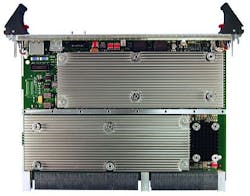Pinpointing HF radar and communications emitters through signals intelligence is goal of IARPA HFGeo program
HF signals are particularly prone to interference because antennas literally can receive their signals from different directions and at different times because of the ionospheric bounce phenomenon. The ionosphere is ionized by solar radiation and helps propagate HF radio signals to distant locations, hence the long distances that shortwave and Ham HF radio signals can travel.
HF radio signals, due to their nature, also are exceedingly difficult for signals intelligence systems to geolocate and characterize accurately, and this is the goal of the IARPA HFGeo program. Ionospheric variation,high noise levels, and ionospheric polarization rotation, multipath induced signal fading, and simultaneous multiple angles-of-arrival will make this job challenging.
The IARPA HFGeo program seeks to capitalize on advances in high-dynamic-range receivers, antenna techniques, adaptive signal processing, and ionospheric ray path prediction, and improved measurement and modeling techniques to geolocate HF emitters around the world, as well as determine if these signals are involved with benign commercial activity, or are part of hostile communications and radar systems.
The goals of the IARPA HFGeo program include developing the ability to resolve multiple angles-of-arrival and polarization states accurately through novel antenna concepts; enhance signal-to-noise ratio and signal detection with multi-dimensional adaptive signal processing; determine the state of the ionosphere accurately; and integrate these technologies into geolocation and source characterization applications.
The HFGeo proposers' day conference will be from 8:30 a.m. to noon Thursday, 23 June 23 2011 in the Washington, D.C. area. Those interested in attending must first register to get access to the proposers' day Website, which has the event agenda, location, directions, security, and lodging information. The deadline for registering is 17 June 2011. Register online at https://conference.brtrc.com/HFGeo_pd/Registration/Register.aspx. No walk-in registrations will be accepted.
For questions or concerns about the IARPA HFGeo proposer's day conference, contact IARPA's Frank Robey by e-mail at [email protected]. For questions about the HFGeo program itself, contact IARPA by e-mail at [email protected].
More information is online at https://conference.brtrc.com/HFGeo_pd/Overview.aspx.
